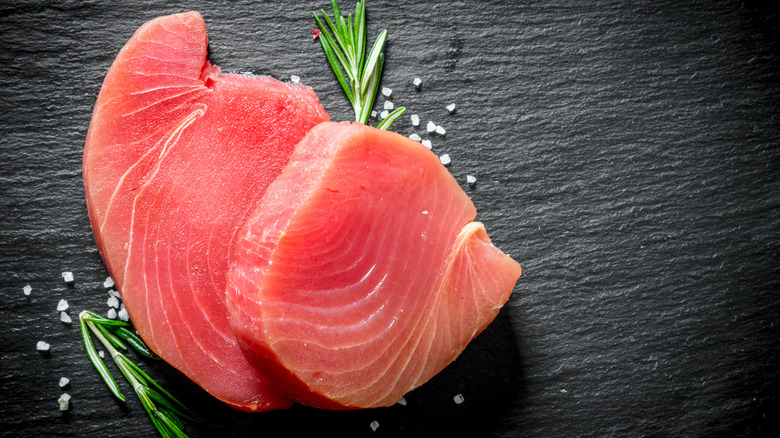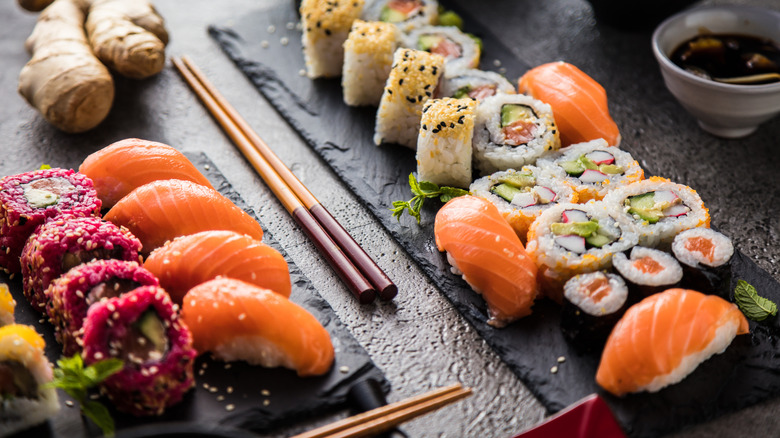What You Need To Know Before Eating Trader Joe's Tuna Raw
Sushi was first invented in Japan over one thousand years ago. But it didn't find its way to the United States until 1966, when two businessmen, Noritoshi Kanai and Harry Wolff, opened a successful sushi restaurant in the Little Tokyo neighborhood of Los Angeles, according to PBS. It soon caught on in other parts of the country and now became popular all over the United States. Now, sushi isn't just sold in high-end Japanese restaurants — you can even purchase it straight from your local grocery store. And although sushi actually refers to the vinegar rice that is used to prepare the meal, most people tend to associate sushi with raw fish, since many common sushi dishes are prepared with raw fish as a main ingredient.
However, one raw fish fan ran into some confusion when they recently purchased raw ahi tuna steaks from their local Trader Joe's. Although the tuna was wild caught and frozen, the Reddit user still wasn't sure if it was safe to eat this fish raw. "I can't seem to figure out if I can eat these Ahi Tuna Steaks raw. I was about to just season them into a poke bowl but I'm not sure. They were completely frozen when purchased and defrosted overnight in the fridge," the original poster explained, asking his fellow Redditors for advice on the best way to prepare and eat this raw dish.
Sushi grade is a marketing term
More than a few Redditors were happy to share their opinions on Trader Joe's raw ahi tuna steaks. "I think the general rule with eating raw fish is that it should be sushi-grade fish and also farmed as opposed to wild caught. So I wouldn't eat this raw," one commenter advised. "I wouldn't eat it raw or not fully cooked unless it says sushi-grade. You probably don't have to worry about parasites but still," another user agreed.
As a general rule, sushi-grade is a term usually used to refer to fish that has been caught, stored, and prepared in such a way that it can be safely consumed raw, according to the Grocery Store Guy. However, the term is not federally regulated, and therefore has no standardized meaning beyond marketing. "It's a marketing term that has little significance [with respect] to actually being able to consume raw fish," The Lobster Place fish market director Davis Herron told Serious Eats. So even if a food is labeled sushi-grade, that doesn't necessarily mean it has met a rigorous standard for consumption safely. So when it comes to purchasing and eating raw fish, trusting your gut might be your best bet. As one Redditor wisely put it, "If your intuition was triggered enough to question to eat it raw or not I suggest you listen to it."

